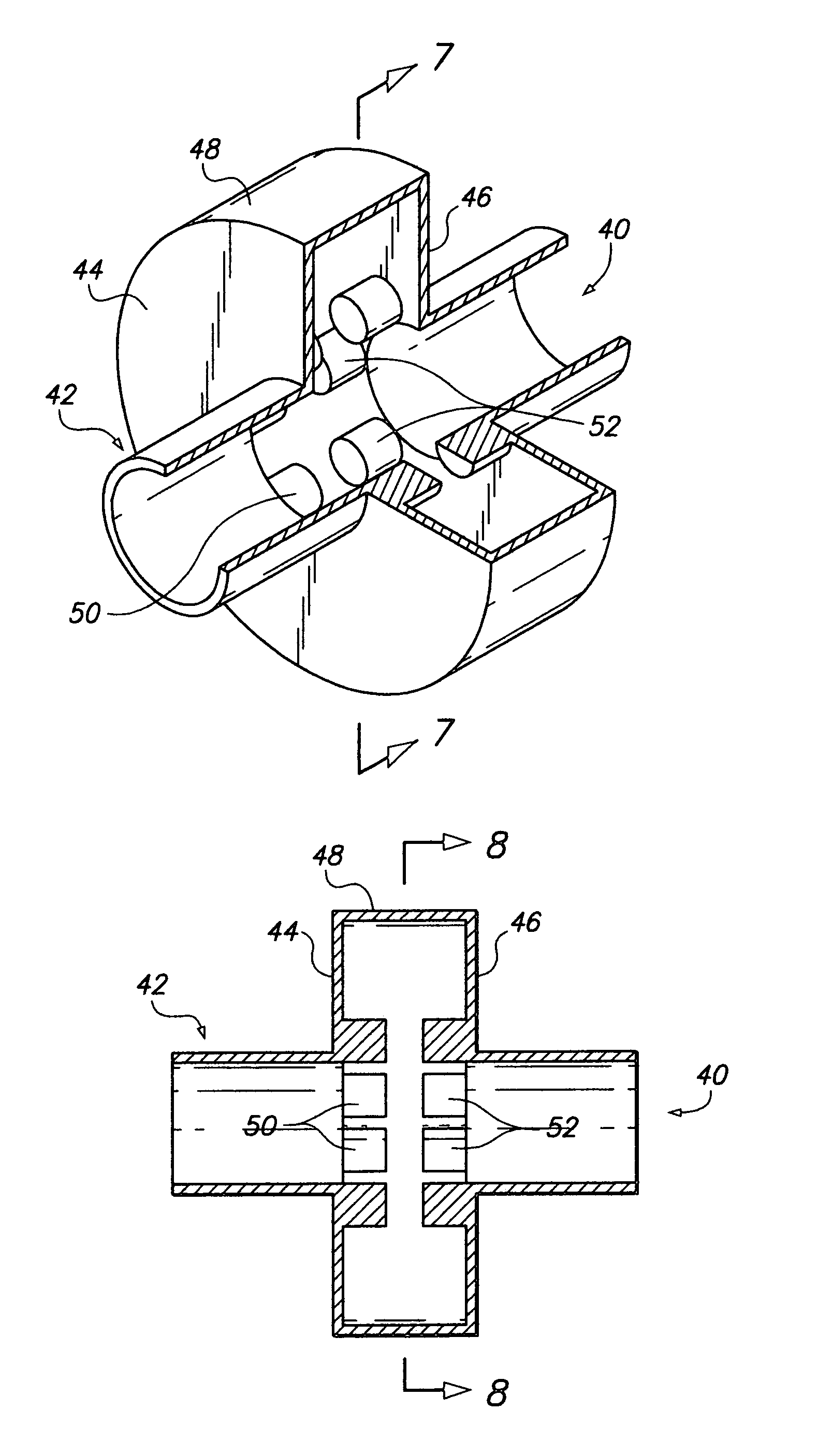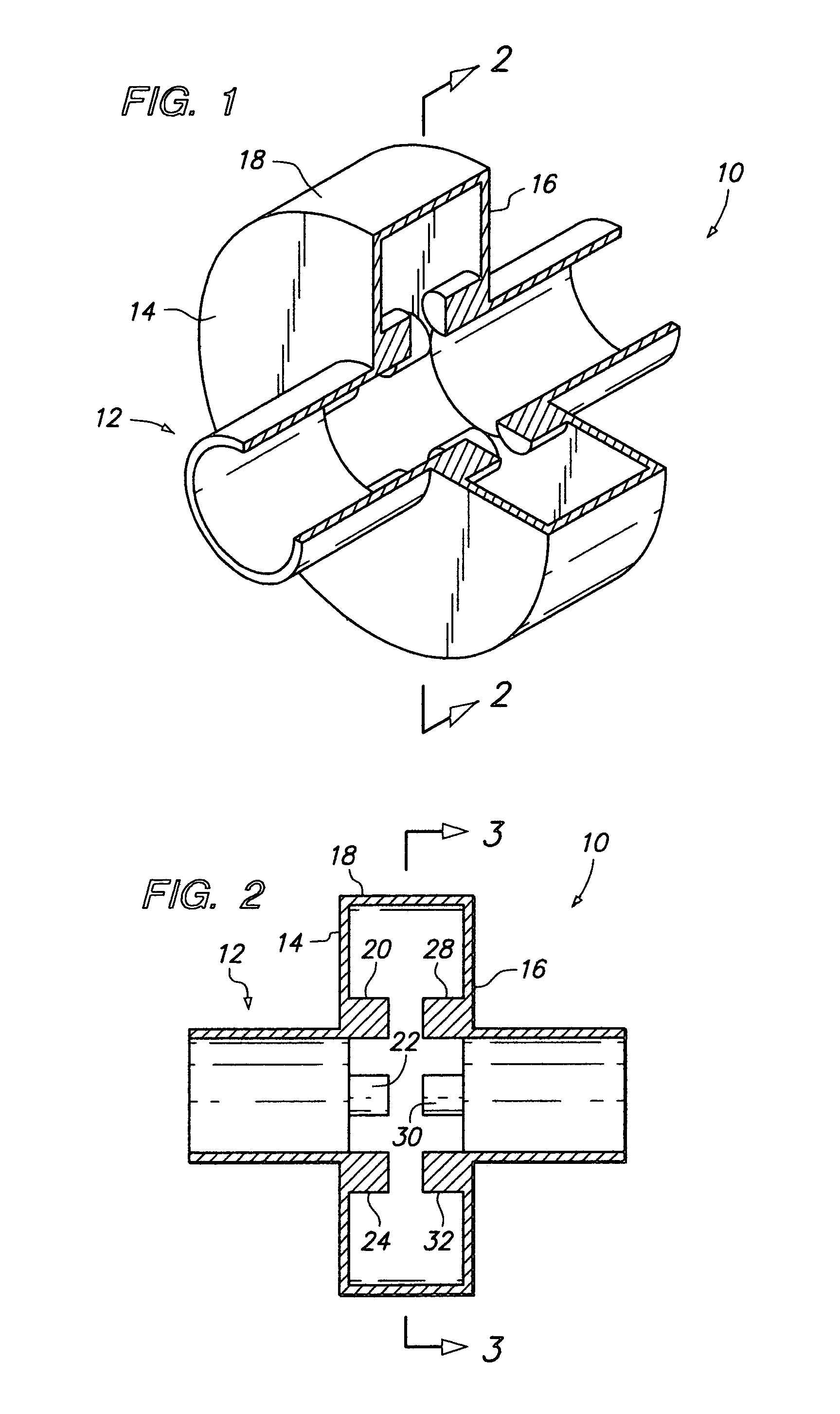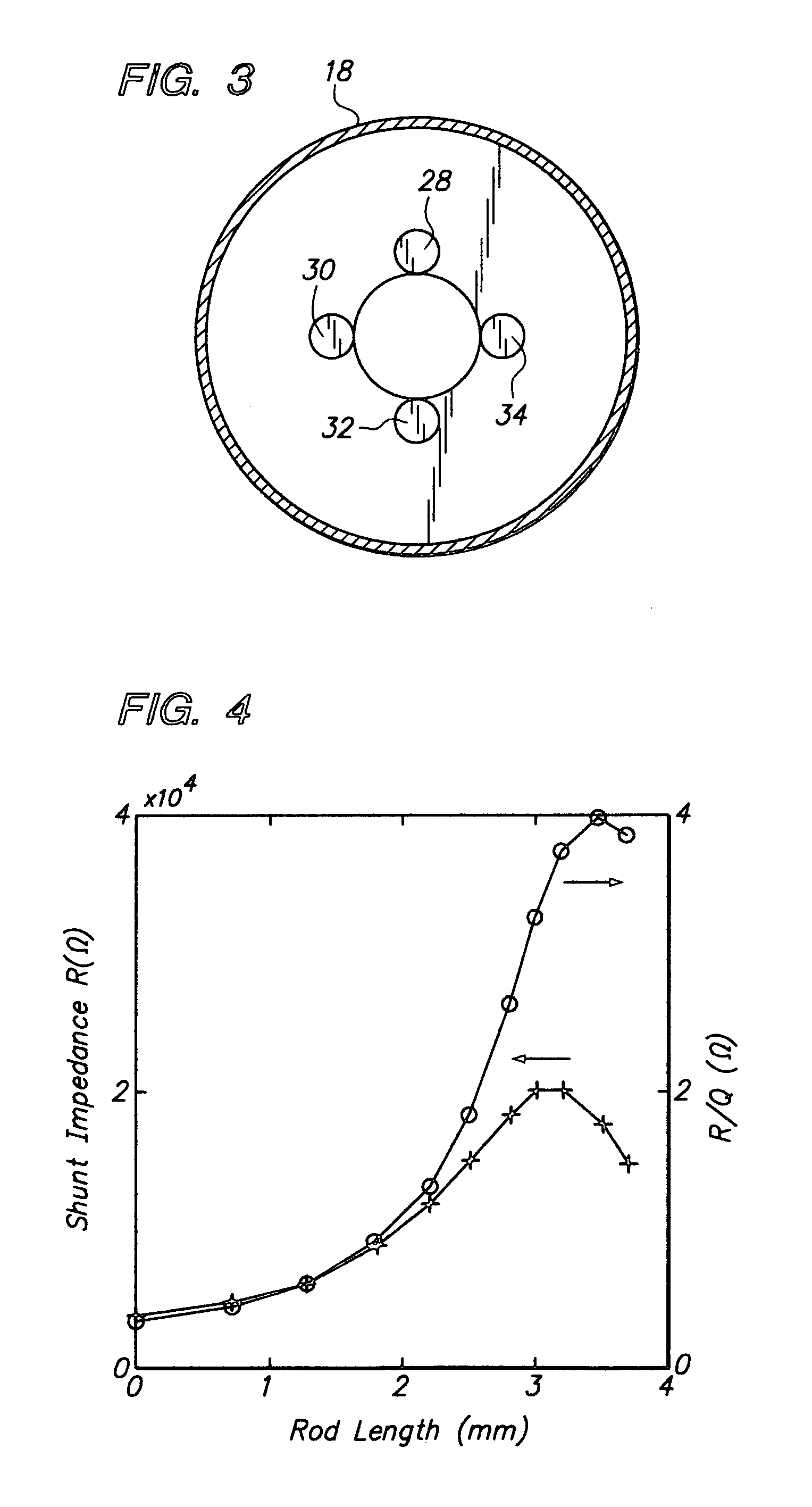Diagnostic resonant cavity for a charged particle accelerator
a particle accelerator and diagnostic resonant technology, applied in the field of electric resonant cavities, can solve the problems of more complex cavity applications, more difficult fabrication and tuning of multi-cell structures, and more difficult disclosure of leemann and yao applications, so as to increase the shunt impedance of the cavity, increase the strength of the resonance signal emitted, and increase the signal strength
- Summary
- Abstract
- Description
- Claims
- Application Information
AI Technical Summary
Benefits of technology
Problems solved by technology
Method used
Image
Examples
Embodiment Construction
[0044]The term “resonant cavity” is used herein to mean a hollow electrically resonant structure that defines an interior volume through which a charged particle beam may be passed.
[0045]The electrons in high-energy research electron accelerators travel at nearly the speed of light and are bunched in time so that the bunch duration is only a small fraction of the period of one oscillation of the resonant cavities through which the electrons pass. The electron beam may be made up of many such bunches spaced at a regular time interval, or it may consist of a single bunch of electrons.
[0046]As noted above, the electric and magnetic fields within a resonant cavity oscillate at frequencies that are determined by the capacitance and inductance of the cavity. A resonant cavity typically has many harmonic resonances, or modes, each of which must be considered separately. A mode is characterized by the voltage it can impart to a charged particle traveling generally parallel to the beam tube ...
PUM
 Login to View More
Login to View More Abstract
Description
Claims
Application Information
 Login to View More
Login to View More - R&D
- Intellectual Property
- Life Sciences
- Materials
- Tech Scout
- Unparalleled Data Quality
- Higher Quality Content
- 60% Fewer Hallucinations
Browse by: Latest US Patents, China's latest patents, Technical Efficacy Thesaurus, Application Domain, Technology Topic, Popular Technical Reports.
© 2025 PatSnap. All rights reserved.Legal|Privacy policy|Modern Slavery Act Transparency Statement|Sitemap|About US| Contact US: help@patsnap.com



